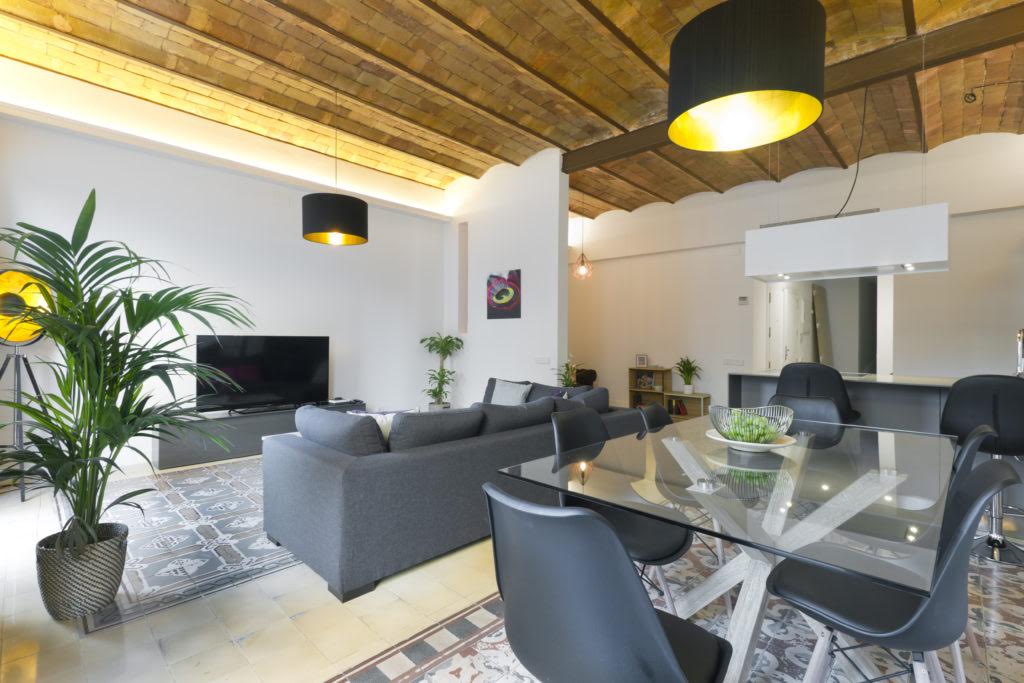
The charm of a traditional Barcelonian flat
Some common points that we find in many old flat of Barcelona, is Catalan vault and hydraulic tiles.
The Catalan vault is a traditional Catalan construction technique that consists of covering the roofs with a brick arch. Because of its ease of construction, the use of Catalan vaults became very popular after the 19th century.
At the same time, decorative pigmented cement tiles were invented in the south of France for paving in buildings. The great architects of modernism such as Gaudi, Domenech i Muntaner, Josep Puig i Cadafalch created unique pieces and included tiles in their works. Little by little, the hydraulic tiles reached homes, where decorators made designs simulating a carpet that occupied the entire room.
From the 1960s, these materials were replaced by cheaper and more modern materials. Even so, many houses still have these treasures behind a false ceiling or overlapping tiles. Recovering in its varied finishes, such as the Catalan vault combined with wooden or iron beams, with exposed bricks or with its plastered surface, bring a dynamism and uniqueness to homes.
Nowadays, Catalan vaults and hydraulic tiles are once again in fashion. Homes with these incredible aesthetic elements tend to have higher sales prices.
At Piso Shopper, we are unconditional fans of Catalan vaults and hydraulic tiles, but we also want to inform about the fragility of old hydraulic tiles. Being pigmented cement, the tiles are very porous and stain quickly. Trying to remove the stains can damage the decorative motif. Now there are ceramic tiles and vinyls that are much more resistant and cheaper.
The Catalan vaults are very resistant. With varnishing the bricks and painting the beams, the ceilings are perfect for many years. To note only as a point to take into account, is that they are not very insulating roofs, which can have an impact on the cost of energy consumption.

